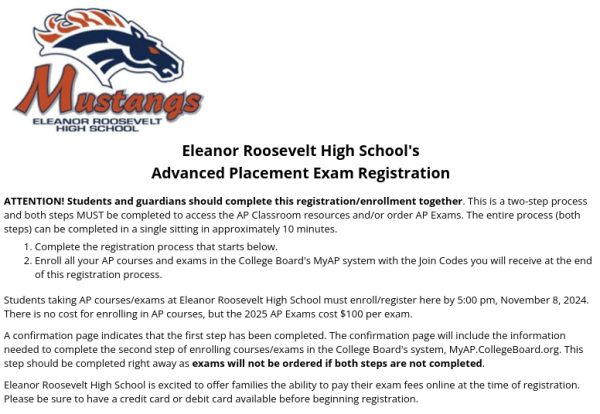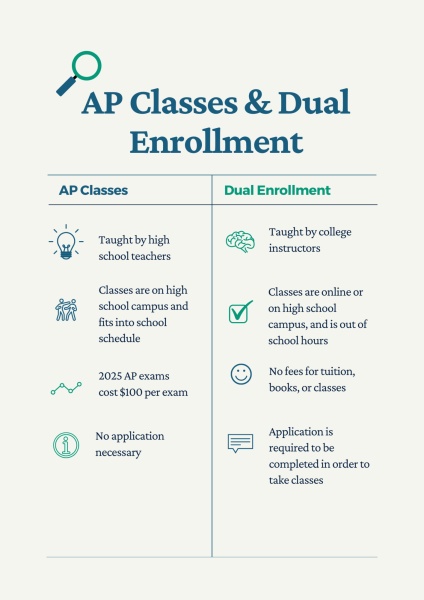There are two popular options for getting college credit while in high school: AP classes and dual enrollment. Both are courses that can prepare high school students for post-secondary education, however, they differ in many ways. The structure, experience, and workload vary between the two.
One of the most notable characteristics of AP classes is that they are part of the high school curriculum with college-level coursework, and are taught by high school teachers. The course culminates in the exam at the end of the year, which is the only way to earn college credit from AP classes. This exam is scored on a 1-5 scale, with 1 being the lowest and 5 being the highest. Most colleges will only accept a score of 3 or above, and some competitive colleges only accept at least a 4 or even a 5. There is no cost for enrolling in AP classes, but AP exams cost around $100 per exam. When it comes to the curriculum’s intensity, AP classes tend to be more difficult as pressure is placed on students to do well on the exam.
“I think APs are helpful, especially English APs because they target working at PIQs, essays, and applications,” says Jenna Liu, a senior at ERHS.

“I think the biggest advantages of taking AP classes is the fact you can save money and time when you enter college as well as expanding your critical thinking for college preparation,” says Ember Collado, a senior at Eleanor Roosevelt. “This can also guide your interest in your future career while in high school and strengthen your application.”
On the other hand, dual enrollment classes are taken online or on the ERHS campus. Eleanor Roosevelt High School is partnered with Norco College to offer students dual enrollment courses and does not require any fees for tuition, classes, or books. Unlike AP classes, dual enrollment classes are taught by college instructors instead of high school teachers. Courses are offered during Fall, Spring, and Summer. One of the greatest advantages of dual enrollment is that students can earn college credit without having to pass an AP exam. Students obtain college credit by just passing the course.
“Dual classes are very tedious and are mostly busy work, whereas AP courses were a lot of thought-based questions that focused on the exam,” says Brasen Laksmana, a graduate from ERHS.
He continues, “When it comes to college-level preparation, the difficulty of AP courses definitely helps a lot more than dual work.”

AP classes and dual enrollment both have their own benefits and advantages that can help students earn college credit and prepare for education after high school.













